I love making hash browns, but it’s not exactly the quickest route to a savory breakfast. Nor is it the most nutritious; even if using sweet potatoes, which are richer in beta-carotene and cold weather-helping antioxidants than regular, pale potatoes, you’ll spend almost twice the amount of time cooking it to a pleasing softness, and by that time you’ll have added more oils to keep it from sticking to the pan. Winter squash is in season, and I’ve found a new use for any type. Browned in a pan with a hit of fresh peppers, which are still lingering from summer, lemony sorrel and some toasty squash seed oil, I can’t think of a better way to start a fall day.
 pretty enough to eat: a carnival (left) and delicata squash
pretty enough to eat: a carnival (left) and delicata squash
Cooking adventures last week took me to Newton and Cambridge, Massachusetts, where I shopped at the community farmers’ market, and gourmet grocery, respectively. Both had been in operation for more than thirty years. In Cambridge, I visited Formaggio Kitchen, a sustainable-minded specialty food shop with a friendly staff. After trying local cheeses, expertly selected vinegars and homemade charcuterie, I left with a most interesting bottle of butternut squash seed oil from Stony Brook WholeHearted Foods. While chatting up many of the farmers in the area who came to the weekly Newton farmers’ market, I got to taste some dozen types of apples, young ginger (now in season, from Old Friends Farm), and Guatemalan rice flour quesadillas from Breadsong Bakery, and came away with some gorgeous squash, about all I could squash in my tote bag.
 fragrant butternut squash seed oil tastes just like the toasted seed
fragrant butternut squash seed oil tastes just like the toasted seed
It was a visit for a project that I’m sure I’ll be talking more about later on. But just as soon as I arrived in Brooklyn, I roasted four ducks from D’Artagnan for Friday’s Feast on Good conference dinner. It was an enormous task and my kitchen still smells of duck fat, but at least I left the feast with leftovers from my dish (which was Peking-style roast duck tacos, or “duckos” — alas, too complicated to seem fit to post here). These included leafy greens and hot peppers I’d ordered from Brooklyn Grange Farm.
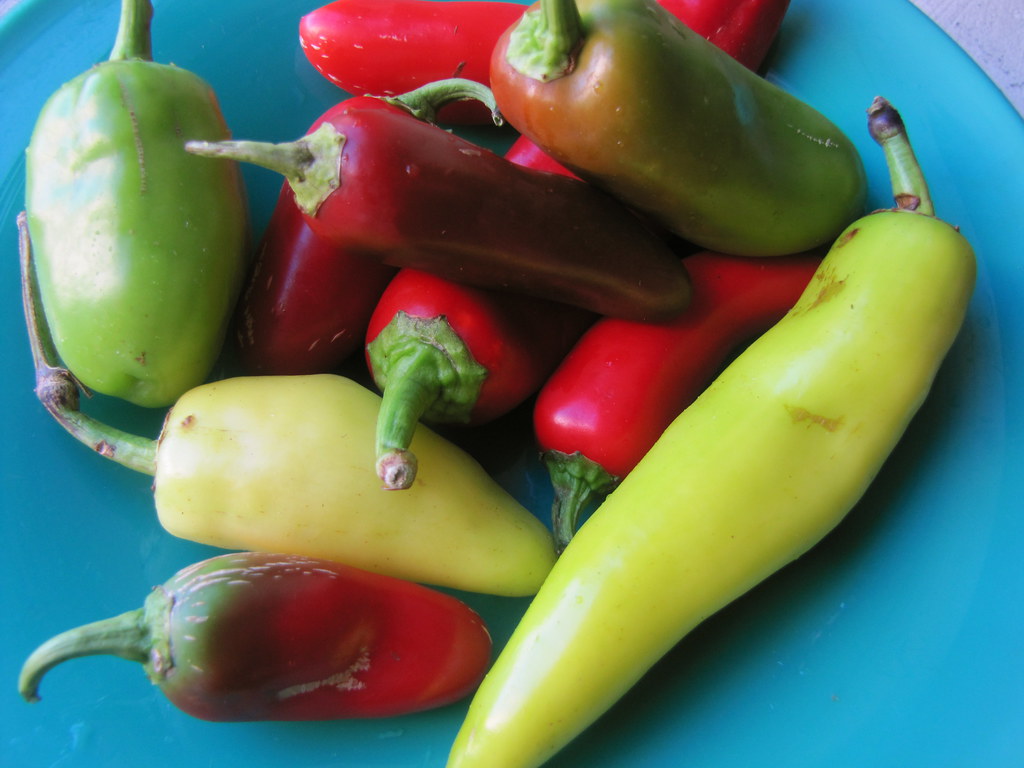 hot peppers from neighboring rooftop farm, Brooklyn Grange
hot peppers from neighboring rooftop farm, Brooklyn Grange
My fridge was full. And I was hungry the next morning. Here’s what this cornucopia of food finds brought me to.
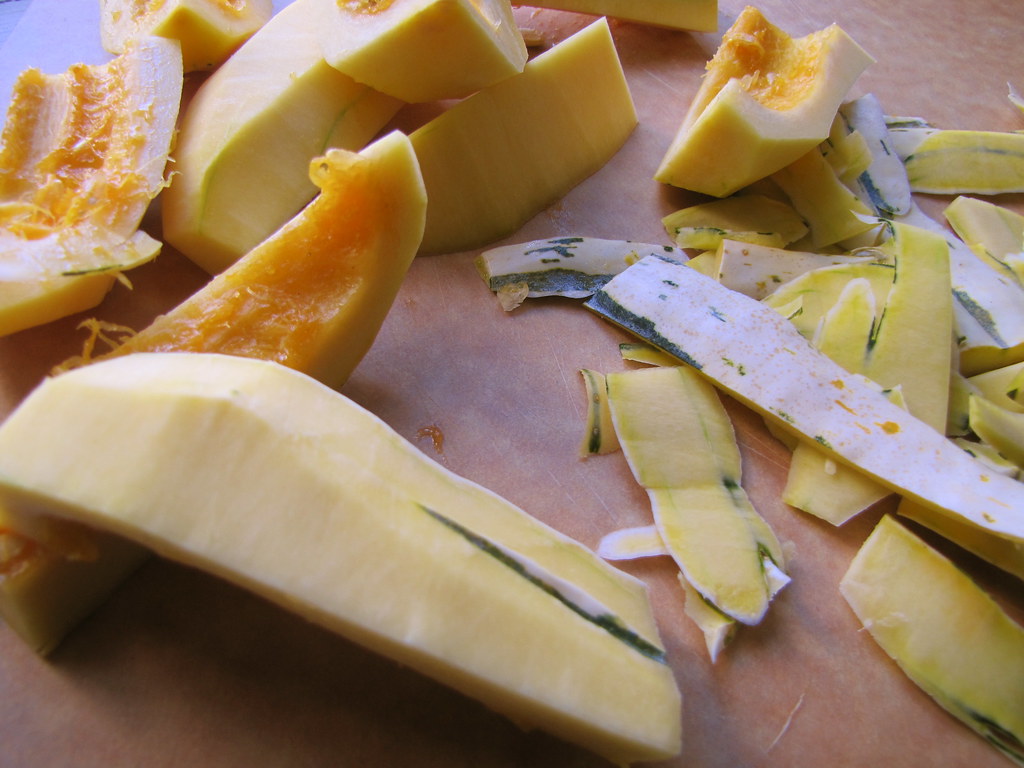 delicata squash meets the chopping block first
delicata squash meets the chopping block first
One small delicata squash looked just about the perfect size for a hearty breakfast with leftovers. I chopped the oblong gourd into small cubes, after peeling and scooping out its seeds. Delicata is not the most intensely sweet winter squash, but it has nice, firm flesh that cooks fairly quickly, without collapsing into mush. I browned the cubes in some oil on a wide chef’s pan, and covered it to let them steam for a bit. Keep in mind these can stick to the pan quickly, so make sure it’s well-oiled first. Because the butternut squash seed oil has a higher smoking point than olive oil, I just used this for cooking the entire dish. It lent it a wonderful, smoky, toasty aroma and taste — just like roasted squash seeds themselves. But you can always use any cooking oil and drizzle some of this on for a finish if you wish to stretch it instead.
The peppers were cut to tiny squares, too, since they were pretty hot. Ben Flanner had plucked a mix of jalapenos, Hungarian hots with some thin cayennes in orange and red from the rooftop farm. Use as many or as little of these (or substitute sweet peppers) to your taste.
On a whim, I tossed in some fresh sorrel just at the end of sauteeing the hash. We’d served these in the duck tacos, for an unexpected tang. I wasn’t sure how they’d taste when sauteed, but the raw version was way too sour for me to eat as a salad alone. Those leaves make lemon juice look like infant formula.
They look much more attractive when fresh than wilted in a pan, though; the thin texture and spring green color of the sorrel became sort of sagged and brown. But it still tasted bright and tangy, definitely a good (and more local) substitute for a squeeze of fresh lemon or lime. You’ll hardly notice a huge bunch of it in the mix when it’s cooked down.
Served with a fried egg on the side, this breakfast was over easy. What a relief for the end of a busy week.
Spicy Squash Hash with Sorrel and Butternut Squash Seed Oil
(makes 2-3 servings)
1 lb squash (any type, such as delicata, butternut, acorn, etc.)
1 small onion, chopped
about 1/4 cup seeded and finely chopped hot peppers (such as jalapenos and Hungarian hots)
1 cup packed sorrel leaves
3 tablespoons butternut squash seed oil (from Stony Brook, or substitute any cooking oil)
salt and pepper to taste
Peel squash and scoop out seeds. Chop to about 1/2-inch squares.
Heat about 2 tablespoons of the oil in a wide, heavy-bottomed pan (can be nonstick) over medium heat and add the squash cubes. Let brown without stirring for a couple minutes on one side. Stir, and add extra oil if pieces are sticking. Season with salt and pepper. Reduce heat to low and cover pan for about 2 minutes. Uncover and taste squash; it should be just tender. Remove squash from pan. Add a little extra oil and cook the onions until just softened, about 4 minutes, over medium-low heat. Add the peppers and continue cooking another 2 minutes or so. Return the squash to the pan, and add the sorrel. Cook, stirring, until sorrel is wilted another 1-2 minutes or so. Taste for seasoning and serve.
Cost Calculator
(for 2-3 servings)
1 lb delicata squash (from farmers’ market): $1.25
1 small onion (at $1/lb): $0.30
1/4 cup chopped hot peppers (at $4/lb): $1.00
1 cup packed sorrel (at $12/lb): $0.75
about 3 tablespoons butternut squash seed oil (at $11/bottle): $2.00
Total: $5.30
Health Factor![]()
![]()
![]()
Three brownie points: This gives the greasy, starchy hash a fresh new face. Using winter squash instead of potatoes adds sweetness along with a wealth of Vitamin A, potassium, fiber, B-vitamins, even omega 3 fatty acids. You might not feel as full from potatoes, but will have plenty of energy. Fresh hot peppers are actually known to help burn fat, and the touch of sorrel is a great way to mix leafy green vitamins into your diet when less expected.
Green Factor![]()
![]()
![]()
![]()
![]()
![]()
![]()
![]()
![]()
Nine maple leaves: Hm, everything from the oil used was grown fairly locally, and with care. I’m fascinated by the story behind Stony Brook’s butternut squash seed oil, which was produced out a desire to use up neighboring farms’ seeds, which were going to waste. The result is incredibly tasty, and sustainable. And on that note, this whole dish was made up of scraps and souvenirs from my neighboring farms, too.
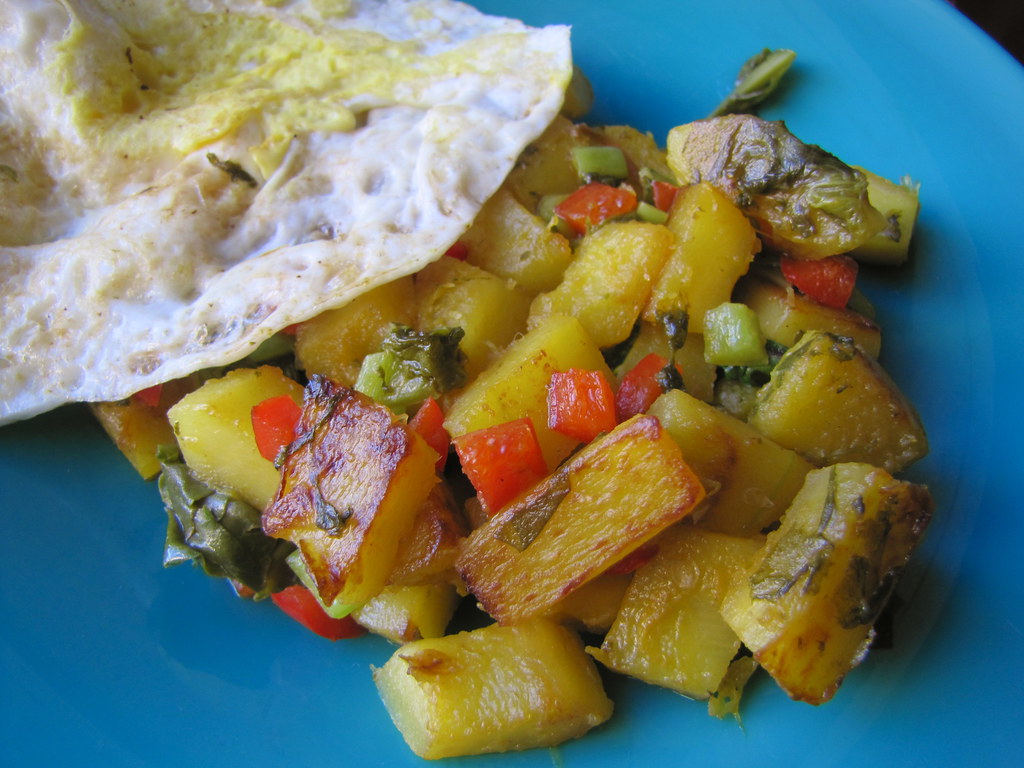
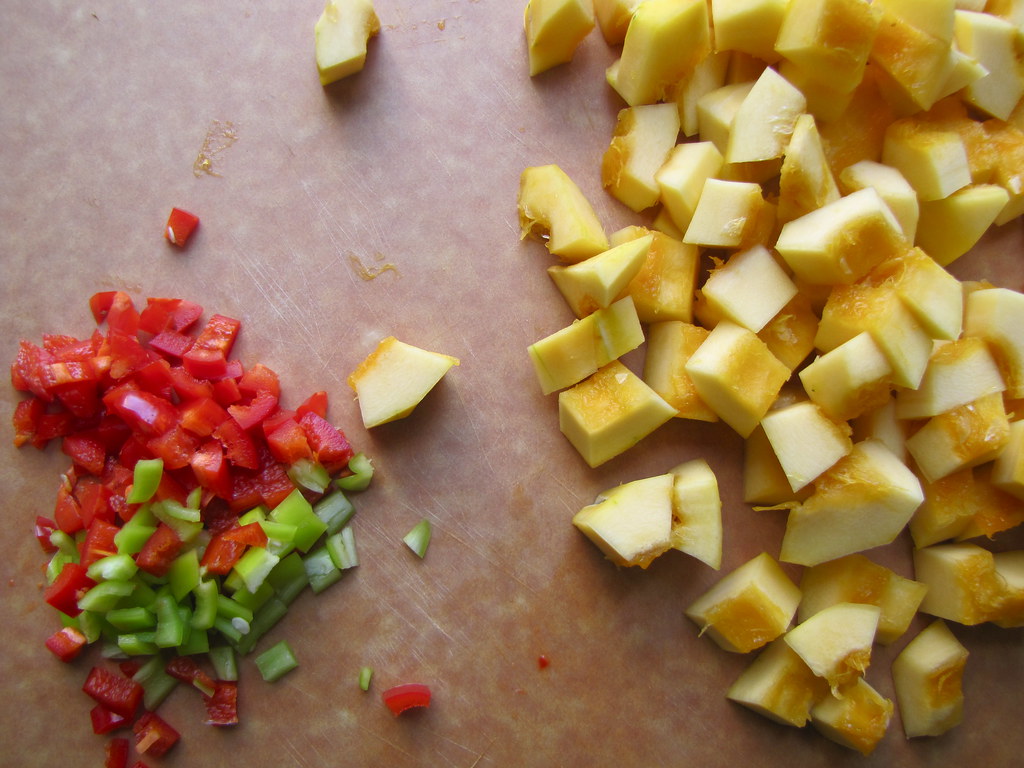
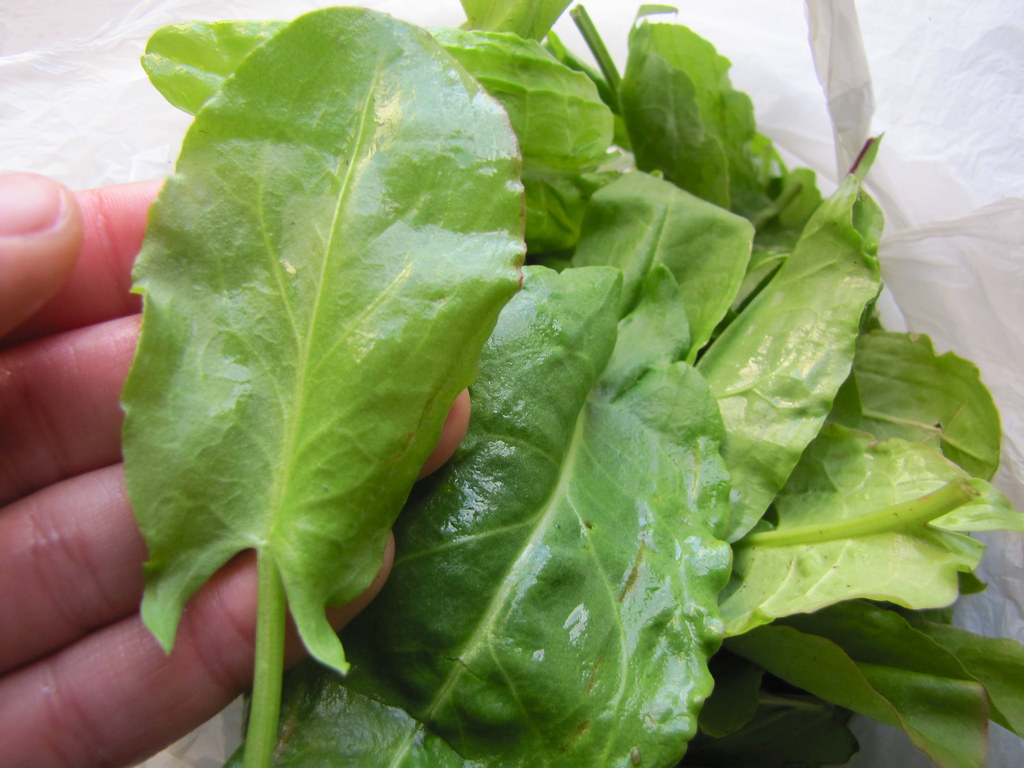
15 Responses
Paula
looks so yummy!
have a nice time!
Paula
j.b
this looks so beautiful. i love squash and all different types.
johanna
last winter i started making hash with calabaza squash – the big round kind of squash they sell in spanish neighborhoods. mind blowingly delicious. also, i just realized recently that squash seeds can be roasted and eaten like pumpkin seeds. why it took me this long to figure out is crazy.
Serena @ Seriously Soupy
What a great fall recipe! I’ve never heard of squash seed oil – but I love that story!
Sauteed squash with purple kale & pumpkin seed oil « Where 5th Avenue Meets Waverly Place
[…] i had recently read a blog post over at not eating out in new york, where cathy used stony brook butternut squash oil. that sounded fascinating, and i was happy to find the brand at the brooklyn kitchen. i picked up […]
Sam
I love squashes they taste great and look fantastic, they have to be the best looking vegetable.
This recipe sounds wonderful, I love the addition of sorrel, I grew some of that last year and thought it was delicious.
Lunch at Sixpoint » Savory Squash Scones
[…] with coconut milk? Done that. Pumpkin panna cotta? Next on the list. On Not Eating Out in New York recently, I posted a recipe with diced squash cooked until soft and crispy in a pan, sort of like hash […]
Lauren M.F.
I made a version of this that had squash, potatoes, carrots, thyme and a turnip (I’m actually eating the last of it in a salad right now) and it is marvelous.
I love having your blog as a resource for inspirational recipes using seasonal ingredients. I’m not much of a recipe follower (usually I look at the ingredient list and the general gist of the steps, and make things up from there based on the ingredients I have at hand) but I have used your blog several times to get ideas for dishes using random vegetables I have around.
My tastebuds are loving winter | Space to simplify.
[…] Squash Hash – I sort of invented my own version of this that had squash, potatoes, onions, turnips, carrots and thyme, and no sorrel. It lasted me many meals and filled me right up. […]
This Week’s Greenmarket Pick: Sorrel! | NonaBrooklyn
[…] Spicy Squash Hash with Sorrel (this one’s mine – from Not Eating Out in New York) […]
exercises
exercises…
[…]Spicy Squash Hash » Not Eating Out in New York[…]…
Thank you to those regular visitors
often in kids.telogen effluvium is hair thinning…
more than the scalp that occurs due to adjustments inside the growth cycle of hair. a big number of hairs enter the resting phase in the same time, causing shedding and subsequent thinning.doctors do not know why certain hair follicles are…
make hash
make hash…
[…]Spicy Squash Hash » Not Eating Out in New York[…]…
amazing looking site
across in a well thought out and…
interesting story.be anecdotalyou can also tell a story based on second-hand accounts or hearsay so to speak. story telling has been a way to communicate since the beginning of time. everyone can relate to a good story, you can even use…
dicas de cortinas no rio de janeiro
the conclusion is the last material your…
readers will get, so compose it in a way that the thoughts will linger in their minds even long after they have read your piece. create a certain impact in the conclusion that will leave your readers pondering or even querying…